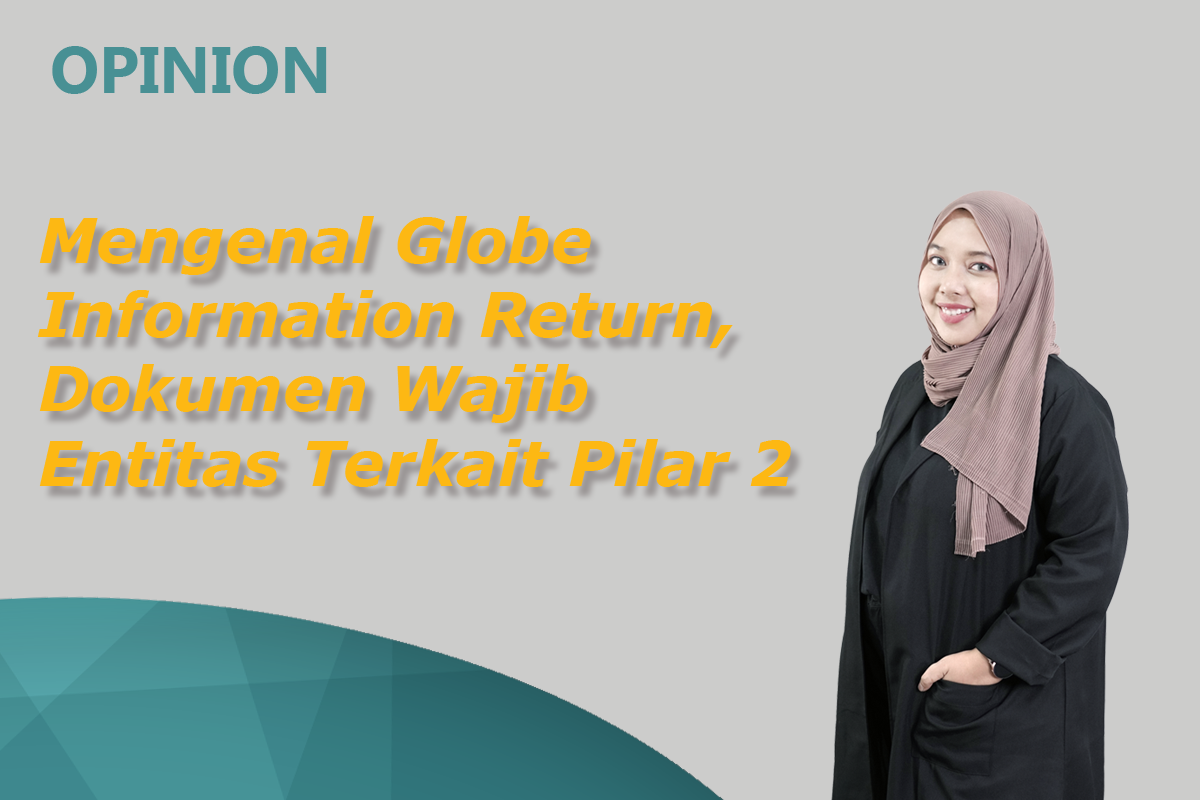Understanding the Global Information Return: A Mandatory Document for Entities related to Pillar 2
Dewi Mita Rozali
|
Monday, 12 February 2024

The global minimum tax provision contained in Pillar 2 of the international taxation consensus does not only affect the amount of tariff that must be borne by covered business entities. More than that, this global agreement will also increase the tax administration obligations that must be fulfilled by covered companies.
The reason is, if the consensus does occur, every multinational company that has an annual consolidated revenue above EUR 750 million is also required to prepare a Globe Information Return (GIR). The GIR is a special report used for the calculation of Top-Up Tax or additional tax arising from the application of Pillar 2.
As we know, Top-Up Tax arises as a consequence of the implementation of Pillar 2 which adopts the Global Anti-Base Erosion (GloBE) approach. Under the GloBE approach each jurisdiction must levy tax on the income of qualifying multinational companies below 15%.
Read: Who Benefits The Most from the Global Tax Consensus?
Suppose a company that falls into the criteria is taxed below 15% by a jurisdiction. In that case, the difference will be subject to a Top-Up Tax by the country where the Ultimate Parent Entity (UPE) is located. However, the difference can also be collected by the source country that applies the Qualified Domestic Minimum Top-Up Tax (QDMTT) or domestic minimum tax instrument. The determination of the taxing right of the Top-Up Tax should follow the tiered rules in the Globe Rules.
GIR Criteria and Implementation
To enable GIR provisions to be implemented by consensus-related jurisdictions, the Organization for Economic Co-operation and Development (OECD) has released GIR guidance.
So what are the criteria for a Company to submit a GIR? Referring to the OECD Pillar 2 guidelines, there are several conditions to determine whether a national company or Multinational Enterprise (MNE) is required to prepare a GIR or not.
Firstly, if an MNE has a consolidated gross revenue value above EUR 750 million or equivalent to IDR 11 trillion. Second, it is not an entity owned by the government or State-Owned Enterprises (SOEs), international organizations, nonprofit organizations, Companies whose parents carry out investment and pension fund business, and other organizations or entities that are not subject to the GloBE Rules.
Data Covered in the GIR
The GIR structure contains approximately 232 data that must be completed by Entities. The data is divided into six sections, as follows.
- The first section provides information about the MNE and details of the constituent entities.
- The second section is the calculation of Globe Income/Loss where the amount of income/loss is calculated based on the jurisdiction where the constituent entity is located.
- The third section is the calculation of Adjusted Covered Tax which contains the total tax (current tax) attributable to the income transaction. The provisions of tax categories that can be included in Covered Tax are contained in the GIR guidelines. The amount of covered tax is calculated based on the jurisdiction where the constituent entity is located.
- The fourth part is the calculation of Substance Based Income Exclusion (SBIE) which is a deduction from Globe Income. SBIE is a certain percentage of the value of fixed assets and salary expenses.
- The fifth section contains the Undertaxed Payment Rule (UTPR) allocation factor.
- The last section is the safe harbors transition data.
The data should be provided by the MNE to determine whether a jurisdiction has taxing rights over another jurisdiction under Globe regulations and how much Top-Up Tax should be paid.
Domestic Provisions
Not only the OECD, the Indonesian government is also reportedly preparing domestic provisions regarding the preparation and submission of GIR documents, in the form of a Minister of Finance Regulation (PMK) so that MNEs in Indonesia can be covered by these provisions.
In the PMK Draft being prepared by the Ministry of Finance, each covered company will be required to submit a GIR no later than 15 months after the end of the tax year.
In general, the PMK Draft consists of 11 chapters which include general provisions of Pillar 2, scope, provisions on the imposition of global minimum tax, and administrative technicalities.
One of them is related to the form of documents that must be attached, which must be in the form of Extensible Markup Language (XML) to the tax system. In other words, the GIR document will be like other tax returns that must be submitted by multinational companies that are covered or meet the criteria in Pillar 2.
The PMK Draft, also regulates the procedures for calculating the profit or loss of constituent entities, the calculation of covered tax up to the calculation of the effective tax rate which is the basis for determining Top-Up Tax.
However, it should be noted that adopting the provisions of Pillar 2 is not an easy task. Given the complexity of the regulation, it must regulate the details of the order of taxing rights of each related jurisdiction and the calculation of Top-Up Tax.
Hence, it is intriguing to see what exactly the Pillar 2 provisions that will be adopted by our government will be. Hopefully, the additional tax administration burden arising from the GIR provisions can be accompanied by clear instructions and an easy administration system. (ASP/KEN)
Disclaimer! This article is a personal opinion and does not reflect the policies of the institution where the author works.


